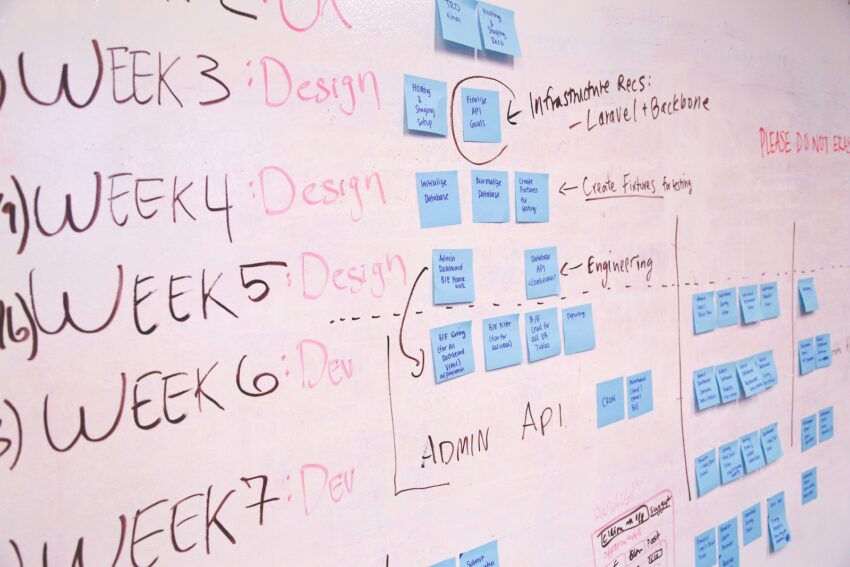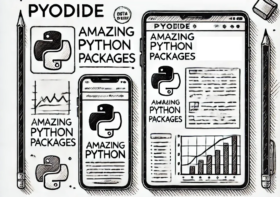Unleashing Synergy for Data as a Service (DaaS): Agile Methodology and Feature-Driven Development (FDD) – Part 3

Table of Contents
The Agile methodology represents a software development approach grounded in principles such as collaboration, adaptability, feedback, and excellence. It can greatly enhance Feature-Driven Development (FDD) by offering a well-organized, targeted, and adaptable framework. This framework consistently delivers tangible, high-value software outcomes with efficiency and frequency.
Agile methodology and Feature Driven Development (FDD) share common principles and values that can complement each other in software development.
Feature-Driven Development (FDD) is an Agile methodology that places its primary focus on creating software features that hold direct value for the end customer. Features are small functions that are, most importantly, client-valued. For example, “complete the login process” might be considered a feature in FDD. These features are compact, customer-centric functionalities designed for frequent and efficient delivery. FDD proves particularly effective for managing extensive and intricate projects, demanding a well-structured and scalable methodology.
Agile Principles in Harmony with FDD
Customer Collaboration Over Contract Negotiation
Agile emphasizes the importance of collaboration with stakeholders. FDD aligns with this principle by involving clients and domain experts in feature identification and prioritization.
Agile’s iterative nature and focus on delivering value align with FDD’s emphasis on incremental development of client-valued features.
Working Software Over Comprehensive Documentation
Both Agile and FDD prioritize delivering working software. FDD’s focus on building features incrementally aligns with Agile’s preference for working software over extensive documentation.
Agile’s emphasis on user stories and minimal viable products (MVPs) aligns with FDD’s feature-centric approach.
Responding to Change Over Following a Plan
Agile methodologies, including Scrum, allow for flexibility and adaptation to changing requirements. FDD’s iterative approach also supports responding to changing client needs.
In Agile, changes can be accommodated in the form of new user stories or reprioritization of the backlog, which aligns with FDD’s iterative development cycles.
Individuals and Interactions Over Processes and Tools
Agile values communication and collaboration among team members. FDD’s emphasis on role-based collaboration and clear communication complements this principle.
Agile teams often hold daily stand-up meetings to facilitate interactions, which can be integrated into FDD teams’ practices.
Customer Feedback Over Contract Negotiation
Agile encourages feedback from customers and end-users to refine and improve the product. FDD’s iterative development allows for client feedback at the end of each feature iteration.
Both approaches support the incorporation of feedback to enhance the final product.
Sustainable Development Over Pace of Work
Agile advocates for maintaining a sustainable pace of work to avoid burnout. FDD’s structured approach helps in managing workloads by breaking them down into feature-specific tasks.
FDD’s short iterations align with the idea of sustainable development by providing regular checkpoints for assessment and adjustment.
Continuous Attention to Technical Excellence and Good Design
Both Agile and FDD emphasize the importance of technical excellence and good design practices. FDD’s focus on clear feature definition and incremental development promotes maintainable code.
Agile’s emphasis on delivering high-quality, potentially shippable increments supports FDD’s goal of delivering working software.
Simplicity Over Complexity
Agile and FDD both value simplicity. Agile encourages teams to do the simplest thing that could possibly work, which aligns with FDD’s approach of breaking down complex requirements into manageable features.
FDD vs. Other Agile Methodologies
Feature-Driven Development (FDD) stands apart from other Agile methodologies, such as Scrum or XP, in several notable ways:
Feature-Centric Focus
FDD places a higher emphasis on features that hold direct value for the customer, as opposed to concentrating on user stories or internal tasks that primarily concern the development team’s workflow.
Documentation Emphasis
FDD adopts a more documentation-intensive approach compared to other Agile methods. It mandates the creation and maintenance of various artifacts, including domain models, feature lists, design diagrams, and progress reports. These artifacts serve as vital tools for conveying the system’s scope, structure, and ongoing status to all stakeholders.
Prescriptive Structure
FDD exhibits a more prescriptive nature than adaptive methodologies. It adheres to a predefined and sequential process that clearly defines roles, activities, and deliverables for each development phase. Unlike some Agile approaches, FDD does not actively encourage frequent alterations or feedback loops during the development cycle.
Agile Feature-Driven Development for Data-as-a-Service
Data as a Service (DaaS) is a concept centered around the provision of data when needed, catering to users or applications regardless of their geographical location or the platforms they employ. The primary objectives of DaaS encompass the reduction of data management expenses, simplification of complexity, enhancement of data quality, and the facilitation of data accessibility. DaaS implementations leverage diverse technologies, including cloud computing, web services, APIs, and data virtualization, to achieve these goals.
There are 5 main activities as following.

Construct a Comprehensive Model
This activity involves the construction of a comprehensive domain object model, which serves as a high-level representation of the primary entities and their interconnections within the software system. Collaborative efforts between development teams and domain experts are crucial during this activity to encapsulate their collective comprehension of the problem domain.
This collaborative endeavor is typically overseen by the chief architect, who plays a pivotal role in guiding and facilitating the process. Furthermore, the chief architect assumes the responsibility of meticulously reviewing these models, with the ultimate aim of either selecting an existing model or crafting an entirely new one that aligns seamlessly with the project’s objectives.
This initial model lays the foundation upon which the subsequent development phases are built, making it a critical milestone in the project’s progression.
Compile a Feature Catalog
In this activity, the primary objective is to meticulously catalog all the features that the software system must deliver. Features, in this context, are compact, client-oriented functionalities, each of which can be accomplished within a relatively short timeframe, typically spanning from a few hours to a few days. For instance, an example of such a feature might be something as concrete as “finalize the login procedure.”
To maintain clarity and organization, these features are methodically categorized into feature sets, each of which corresponds to distinct subdomains or discrete business functions outlined in the domain model. This critical step in the development journey is spearheaded by the chief programmer, who assumes the role of leading and orchestrating this endeavor. The chief programmer ensures that these features are not only meticulously defined but also thoughtfully prioritized and evaluated in terms of the estimated effort required for their implementation. This meticulous curation of features and their subsequent structuring into sets lays the groundwork for a streamlined and efficient development process, facilitating the subsequent phases of the project.
Strategize Feature-Centric Planning
This pivotal activity revolves around the formulation of a comprehensive development and delivery strategy for the identified features. The foundation of this strategy is rooted in the meticulously compiled feature list, which represents the software system’s core capabilities, and a clear understanding of the dependencies that exist among these features.
The devised plan goes further by not only allocating features to distinct development teams but also meticulously specifying the sequence in which features will be tackled and the estimated timeframes required for each feature’s completion. This sequencing is vital to ensure that feature dependencies are addressed in a logical and efficient manner.
Steering the ship during this phase is the project manager, who takes on the responsibility of orchestrating this intricate process. The project manager collaborates closely with both the chief programmer and the chief architect to ensure alignment with the project’s overarching goals and objectives. This collaborative effort ensures that the project is on course to meet its milestones and timelines effectively.
Detailed Feature-Oriented Design
In this activity, the primary focus revolves around the meticulous design of each individual feature within the software system. This design process is intricate and thorough, encompassing several essential components.
Firstly, the design encompasses the creation of a sequence diagram that provides a visual representation of how the various objects within the domain model interact to execute and realize the specific feature under consideration. This diagram serves as a critical blueprint for understanding the intricacies of the feature’s implementation.
Furthermore, the design effort extends to include any requisite class diagrams, which offer a structured depiction of the modifications, additions, or enhancements required to support the feature. These class diagrams provide insights into how new classes or methods are introduced or modified to seamlessly integrate with the existing system.
This detailed design undertaking is led by a compact team of developers, with a specific individual assuming the role of the class owner. The class owner takes charge of a subset of classes within the domain model and is entrusted with the responsibility of overseeing their adaptation to accommodate the requirements of the feature. Through this collaborative effort, a well-defined and meticulously engineered design blueprint is established for each feature, serving as the bedrock for subsequent development phases.
Feature-Centric Construction
This pivotal activity of the development process centers on the actual construction of each feature, encompassing a spectrum of critical activities including coding, rigorous testing, and seamless integration.
The coding aspect adheres meticulously to predefined coding standards and conventions, ensuring consistency and maintainability across the codebase. Developers work diligently to translate the feature design into functional code, meticulously aligning with established coding practices.
Quality assurance takes center stage as unit tests and peer reviews play a pivotal role in validating the code’s functionality and robustness. Unit tests are meticulously crafted to evaluate the individual components and units of code, guaranteeing that they function as intended. Additionally, peer reviews foster a collaborative environment where experienced developers rigorously assess the code’s quality and adherence to best practices.
Integration is a seamless and continuous process, facilitated by sophisticated continuous integration tools. These tools enable the integration of newly developed code into the main build swiftly and without disruptions. This seamless integration ensures that the latest feature enhancements are readily available for further development and testing.
Crucially, the team responsible for the feature’s design takes charge of the construction activity. The class owner, leading the development effort, plays a pivotal role in driving the construction process forward. Their profound familiarity with the intricacies of the domain model ensures that the feature aligns seamlessly with the broader system architecture. Through this collaborative and methodical approach, each feature takes shape, contributing to the project’s overall progress and success.
Key Takeaways
This marks the third installment in my series (Part 1 and Part 2) about Feature-Driven Development (FDD) tailored for Data as a Service (DaaS). Allow me to share five key insights gleaned from this exploration.
Structured Development Framework
FDD provides a structured and systematic approach to software development, focusing on client-valued features. This structure ensures that development teams can effectively manage complex projects, resulting in a more organized and efficient process.
Feature-Centric Focus
FDD’s emphasis on delivering small, client-centric features aligns perfectly with the Agile philosophy, enabling teams to respond to changing requirements and deliver value to customers incrementally.
Clear and Collaborative Design
FDD’s detailed domain modeling and feature identification phases promote clear communication and collaboration among developers, domain experts, and stakeholders. This clarity helps in creating a shared understanding of the project’s scope and requirements.
Continuous Integration
The incorporation of continuous integration tools ensures that new features are seamlessly integrated into the main build, enabling rapid development and testing cycles. This approach contributes to improved software quality and reliability.
Role-Based Collaboration
FDD encourages role-based collaboration, with class owners and chief programmers playing critical roles in feature development. This collaborative effort ensures that features align with the domain model and maintain consistency within the codebase.




Leave a Reply